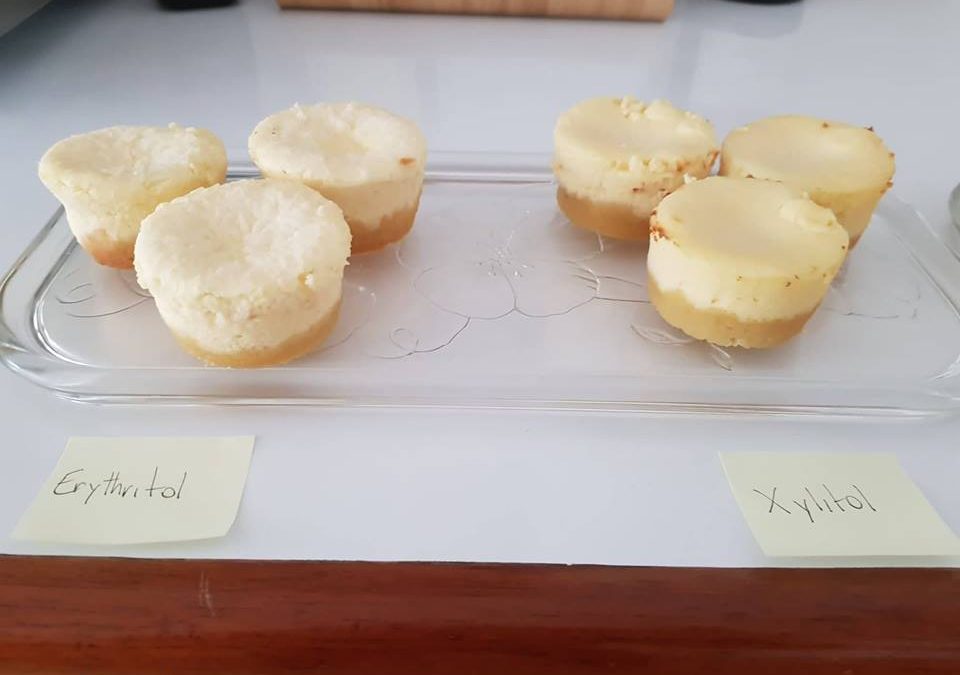If you, like me, are a passionate home baker then you probably have had some misgivings about going low carb. But you don’t want to ditch your hobby, or bake only to have your treats sit around for friends and family. And if you’ve already done some research on baking low carb, it can be confusing. There are many alternative sweeteners available nowadays and baking is practically a science so you have to tread carefully with sugar replacements—not all of them are created equal. Since I love cheesecake, I decided to test the results of the four most widely-available, healthy sugar alternatives—erythritol, xylitol, stevia, and stevia blended with erythritol—using this low-carb recipe .
A quick recap on the sweeteners. Erythritol, a sugar alcohol, is the most popular sweetener in the low-carb community, though it has a cooling effect. It contains about 5% of sugar’s calories and can be used solo or with stevia. Xylitol, another sugar alcohol, tastes like sugar (with 40% of its calories), has less of a cooling effect and is commonly used in chewing gum for its dental health benefits but is toxic for dogs—should you have one who might eat your baked goods! Stevia, derived from the Stevia bush leaves originally bordering Paraguay and Brazil, is a natural oldie but goodie that dethroned Splenda about 10 years ago as the go-to for diabetics and dieters. Finally, stevia leaf extract blended with erythritol is very common (for example, the popular Truvia—which also contains unspecified “natural flavors”). So, which of these produced the best cheesecake?
The erythritol cheesecake turned out bland, fluffy on top and grainy at the bottom (though no cooling effect). I haven’t had this inconsistency issue with other desserts so it may be specific to the recipe. In this case, varying the cream cheese, egg and baking time didn’t dissolve the erythritol. In contrast, the xylitol cheesecake had a smooth texture, creamy interior and more compact appearance, and was tasty and sweet. In general, I’ve found xylitol tastes as good as, and bakes out as well as, sugar and thus goes unnoticed as a replacement. In this case, it had no cooling effect.
I asked my mom to sample the stevia cheesecake because, unfortunately, I’m one of those people who can’t stand the taste of stevia! But the dislike seemed to be genetic. I was also afraid the cheesecake would be deflated because the stevia equivalent of sugar was measured in drops (1 TBSP) and one of sugar’s roles in baking is to create bulk. The final product was indeed smaller but not considerably, and the texture was fine. You could easily enjoy this cheesecake if you’re lucky enough to like stevia.
To test the blended sweetener, I used a brand marketed as only stevia (very common practice for blended brands) and the results fell between the erythritol and stevia versions, but with a better texture than either (despite some grainy bits at the bottom) that came close to the xylitol cheesecake. However, there was an unexplainable hole in the middle the mini cakes! So if presentation is important to you, you might be taking a risk with this sweetener.
The hands-down winner for this match would be the xylitol in all categories. Nice, compact mini cakes, no irregularities and virtually the same taste and texture as traditional cheesecake. As a result, my advice would be If you’re hesitant to dive into low-carb baking because of sweeteners, and you also love cheesecake, you may want to start here.
